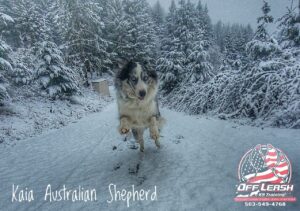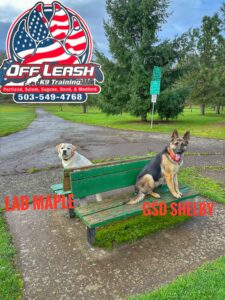Unleashing the Power of Tracking Training: A Complete Guide for You and Your Dog
Discover the essentials of tracking training with your dog, from techniques to benefits and safety tips for a rewarding experience.
Understanding the Benefits of Tracking Training
Tracking training is an engaging way to enhance a dog’s scent-following abilities, making it a valuable skill not only for recreational activities but also for practical applications like search and rescue. Dogs possess a sense of smell that is approximately 100,000 times stronger than that of humans, which makes them exceptional candidates for tracking sports. This training is not just about following scents; it also provides significant mental stimulation, essential for a dog’s overall well-being and can help reduce behavioral issues such as anxiety or boredom.
Additionally, tracking training serves as an excellent exercise alternative, allowing dogs to expend energy in a productive manner while creating a stronger bond with their owners. For example, dogs can enjoy working on real scent trails, which can be a fun and fulfilling way to engage their instincts while enjoying the outdoors.
Importance of Tracking Training
The importance of tracking training goes beyond the fun aspect; it fosters a strong bond between the dog and their handler, encouraging teamwork and communication. Dogs trained in tracking have the potential to assist in locating missing persons, providing invaluable support in search and rescue operations where every second counts. Moreover, mastering tracking techniques can significantly enhance a dog’s overall obedience skills, making them more responsive to commands and better behaved in general.
Regular tracking practice is not just beneficial for honing tracking skills; it also helps maintain a dog’s focus and discipline. For instance, a dog that regularly participates in tracking exercises will likely show improved attentiveness during other types of training sessions, leading to a more obedient companion.
Basic Techniques for Tracking and Trailing
To start tracking training, it’s essential to introduce your dog to short scent trails using familiar items, such as a piece of your clothing or a favorite toy. Gradually increasing the complexity of the tracks by adding curves and distractions will enhance the dog’s focus and tracking skills. A simple command like “Find it!” can encourage your dog to follow the scent without leading them directly, allowing them to engage their natural instincts.
Incorporating various surfaces such as grass, dirt, and asphalt during training will also teach your dog to track scents in diverse environments. Allowing your dog to explore and sniff freely during these sessions is crucial, as it builds confidence and strengthens their natural tracking instincts.
Recommended Equipment for Tracking Training
Essential equipment for tracking training includes a harness, a 20-40 foot lead, and flags to mark the track for visibility. The tracking harness should fit comfortably and securely, ensuring that your dog has the freedom to move while maintaining control. Treats play a crucial role in tracking training; hot dogs are a popular choice because they can be mashed into the ground to create a scent trail, which adds an extra layer of engagement for your dog.
Moreover, using a durable tracking leash that can withstand outdoor conditions is vital for safety and effectiveness. Investing in a tracking vest for your dog can also be beneficial, as it allows for easy storage of treats and other essentials, keeping everything organized during training sessions.
The Role of Treats and Positive Reinforcement
In tracking training, positive reinforcement techniques, such as using treats, are crucial for improving a dog’s motivation and willingness to learn. Regularly rewarding dogs during training helps reinforce desired behaviors, leading to improved tracking performance over time. It’s also important to vary the types of treats used to keep your dog’s interest high and excitement levels up during training.
The timing of rewards is essential; they should be given immediately after the desired behavior to help your dog associate the action with the reward. As your dog becomes more proficient, it can be beneficial to limit treat rewards and transition to praise and play as primary motivators, which will help maintain enthusiasm for tracking.
Safety Tips for Outdoor Tracking Activities
When engaging in outdoor tracking activities, safety should always be a priority. Keeping your dog on a leash or harness in unfamiliar areas is essential to prevent them from running off. It’s also important to monitor weather conditions and avoid extreme temperatures to ensure your dog remains comfortable and safe during outdoor activities.
Hydration is crucial, especially during long tracking sessions, so always carry water for your dog. Additionally, being aware of local wildlife and potential hazards in the tracking area, such as traffic or poisonous plants, is vital for safety. Using reflective gear in low-light conditions can help ensure visibility and safety for both you and your dog.
Engaging in Tracking Events
Tracking events, such as those hosted by the American Kennel Club (AKC), allow dogs to demonstrate their natural ability to follow scent trails. Dogs can earn various titles based on the complexity of the tracking tasks, such as Tracking Dog (TD) and Variable Surface Tracking (VST). These events typically require minimal equipment, making them accessible to a wide range of dog owners and encouraging participation.
Participating in tracking events is not only a great way to challenge your dog but also boosts their confidence and socialization skills as they interact with other dogs and handlers. Training for these events can also improve your dog’s overall fitness and stamina, resulting in a more agile and responsive companion.
Conclusion
Tracking training offers numerous benefits for both you and your dog, from enhancing their natural abilities to strengthening the bond between you. Engaging in this rewarding activity not only sharpens their skills but also contributes positively to their overall behavior and obedience. With the right techniques, equipment, and safety considerations, tracking can be a fulfilling and enjoyable journey for both you and your furry friend.



